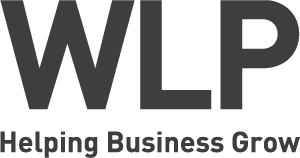We are constantly hearing about the Government wanting to see SME’s grow their businesses, which in turn they believe will help grow the UK economy. But what are the barriers to successful expansion, and why do some business owners struggle to expand to the levels they aspire to?
The opportunity to grow your business presents numerous challenges, including:
- finding new customers
- securing new sales
- sourcing additional materials and staff
- maintaining service standards to existing and new customers
- financing the growth
Growth is a good thing, but careful financial planning is required to ensure that growth is successful and leads to an improvement to the bottom line profits of the business. Many business owners focus on promoting their product or service and securing orders/sales without fully considering the financial ramifications these may have. Some examples include:
- Growth in sales means that, unless you are selling for cash, additional debtors will need to be financed until they in turn pay you. This can be anything up to 90 days after the sale has been made, depending on your terms and the sector in which you operate. An increase in sales of £50,000 per month on 45 days terms means an additional £75,000 cash tied up in debtors. This may be offset in part by increased/improved creditor terms, but where wages feature as a high % of cost of production, this option may not generate much of the required working capital.
- Stock increases will most likely be necessary to ensure regular supply or production at the higher levels of business. Increased creditor terms may help, but some suppliers may have reached the maximum level of credit/terms they are prepared to provide to you.
- Extra sales may mean that additional production capacity is needed – additional machines, equipment, delivery vans, computers etc. These generally need to be paid for before new income streams start.
- Premises – are they big enough for the anticipated level of sales? Will property changes need to be made, either adapted, extended or re-located?
All of the above will require additional cash to fund the growth, whether it’s from cash reserves, new equity or finance.
Solution
Planning the level of required finance and its structure is essential to ensure enough cash is provided for growth and to help check that such growth is affordable. Types of finance include:
Working capital – Careful calculation of the cash gap and daily cost of sales to help identify the level of increased cash needed. Traditionally this is provided by the business itself, increased creditors, from retained cash, a Bank overdraft or an Invoice Finance facility. An Invoice Finance facility is particularly flexible (albeit typically more expensive than an overdraft) where continued growth is anticipated. Invoice Finance provides between 60%-85% of the value of invoices on day 1 with the residual (less finance charges) paid to the SME when the invoice is settled 30-90 days later.
HP/Lease Finance – This type of finance is used for the purchase of machinery, vehicles, computer hardware and other fixed assets. Amounts are usually up to 90% of cost and the repayment profile should be geared to the useful life of the asset. This helps ensure that the debt is repaid around the time a replacement is being considered and allow replacement finance to be arranged to reflect the monthly cost of the asset to the business (not to be confused with capital allowances or depreciation)
Bank Loan – This type of facility, usually provided by a Bank or specialist lender, will help with major capital expenditure on premises and major machinery purchases, normally between 70% of the costs and in some cases 100%. It is usually available over 3-25 years depending on the lender, but since 2008, the mainstream Banks may look to limit a commitment period to 3-5 years within a longer-term loan profile. This provides the Bank with a break part way through the loan and helps keep the cost of funds down. It does, however, mean arrangement fees are payable at each break throughout the loan, pushing up the true cost of this finance. It can also trigger a review of the loan interest rate – but as they say, ‘rates can go down, as well as up’!
Crowd Funding – This is a relatively new way for businesses to fund growth through a mix of short to medium term loans and equity investment. There are specialist lenders for certain industry sectors and technologies. The interest rates tend to be higher and periods are shorter, but can be easier to arrange than traditional Bank lending.
Whatever your plans, careful planning and management of cash-flow are key components of success. If you have any questions, would like some advice on planning for growth or require support in raising the necessary funding, please don’t hesitate to get in touch with Colin on enquiry@w-l-p.co.uk.

